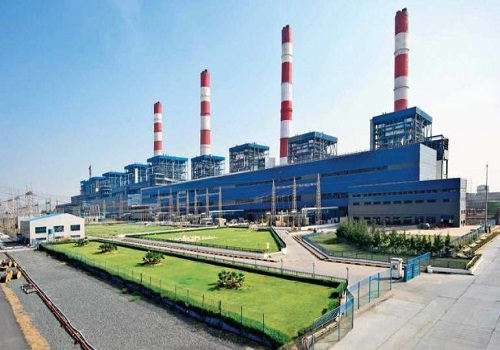Zinc trading range for the day is 269.6-279.8 - Kedia Advisory

Gold
Gold prices climbed 0.86% to settle at ?86,152, supported by a weaker dollar and ongoing concerns about economic slowdown due to tariff wars. The volatility in global markets, triggered by U.S. tariff policies, has intensified worries about economic growth, prompting investors to seek safe-haven assets like gold. Market participants are closely monitoring key U.S. inflation indicators, with the Consumer Price Index (CPI) due on Wednesday and the Producer Price Index (PPI) on Thursday, which could provide insights into the Federal Reserve’s next move on interest rates. Traders are largely anticipating a rate cut in June, which could further boost gold prices. China’s gold reserves increased for a fourth consecutive month in February, rising to 73.61 million fine troy ounces from 73.45 million in January, reflecting the central bank’s continued accumulation of the precious metal. However, gold demand in India remained weak due to near-record high prices and year-end financial considerations, leading to a discount of $10 to $21 per ounce over official domestic prices. India’s gold consumption in 2025 is expected to moderate from last year’s nine-year peak of 802.8 tons, as record-high prices are expected to dampen jewellery demand. However, investment demand remains strong, with increased interest in gold ETFs, digital gold, and coins. Technically, fresh buying was observed as open interest rose by 2.22% to 14,522 contracts. Gold has immediate support at ?85,705, with a potential test of ?85,260 if breached, while resistance is at ?86,400, with further upside toward ?86,650 if surpassed.
Trading Ideas:
* Gold trading range for the day is 85260-86650.
* Gold prices gained amid a weaker dollar and economic slowdown worries due to tariff wars.
* Investors strapped in for a key inflation print that could shed light on U.S. monetary policy move.
* Market attention is on U.S. Consumer Price Index (CPI) on Wednesday and Producer Price Index (PPI) print on Thursday.
Silver
Silver prices surged 1.73% to settle at ?98,132, driven by trade tensions and anticipation of U.S. inflation data that could influence Federal Reserve policy decisions. Fed Chair Jerome Powell signaled no immediate need for rate cuts despite economic uncertainties. Strong U.S. job data, with openings rising to 7.74 million in January and job quits hitting a six-month high, reinforced expectations of a resilient labor market, which could delay Fed rate cuts. Meanwhile, silver supply continues to rise, with Comex inventories reaching a record 403.2 million ounces by late February. Hecla Mining, the largest U.S. silver producer, reported a 13% increase in output for 2024, reaching 16.2 million ounces. However, demand showed mixed trends—U.S. silver coin sales fell 27% year-over-year in January to 3.5 million ounces, the lowest since 2018. Despite this, the global silver market is set to remain in a supply deficit for the fifth consecutive year in 2025, with industrial demand projected to reach new highs. Silver mine production is forecast to rise by 2% to 844 million ounces, while recycling is projected to increase by 5% to over 200 million ounces. The 2025 silver market deficit is expected to decline by 19% but remains historically significant at 149 million ounces. Technically, fresh buying was observed, with open interest rising 9.42% to 20,539 contracts. Silver has immediate support at ?96,920, with further downside at ?95,700. Resistance is at ?98,985, and a breakout above could push prices toward ?99,830.
Trading Ideas:
* Silver trading range for the day is 95700-99830.
* Silver gains amid trade tensions and investors awaited U.S. inflation data for insights into Fed’s next policy steps.
* Job openings in the United States increased by 232,000 to 7.74 million in January 2025.
* Traders are looking to U.S. CPI data on Wednesday and the PPI on Thursday for U.S. interest rate cues.
Crude oil
Crude oil prices edged up by 0.21% to settle at ?5,790, driven by remarks from Russia’s Deputy Prime Minister Alexander Novak, who hinted that OPEC+ could reconsider production levels if market imbalances emerge. The group is set to increase output in April, but future adjustments remain possible. Meanwhile, China’s crude oil imports declined by 5% in the first two months of 2025, as tougher U.S. sanctions on Russian and Iranian shipments, coupled with a Chinese port ban, disrupted flows. Imports during January and February stood at 83.85 million metric tons, or approximately 10.38 million barrels per day. In the U.S., crude oil inventories saw a significant build of 3.614 million barrels for the week ending February 28, surpassing market expectations of a 0.9 million increase. Stocks at the Cushing hub also rose by 1.124 million barrels. However, gasoline inventories declined by 1.433 million barrels, while distillate stockpiles, including diesel and heating oil, fell by 1.318 million barrels, both exceeding forecasted drawdowns. The EIA revised its projection for U.S. crude production in 2025 to 13.59 million barrels per day, up from its earlier estimate of 13.55 million bpd, highlighting steady output growth. U.S. consumption is expected to remain stable at 20.5 million bpd. Technically, crude oil is witnessing short covering, as open interest dropped by 9.84% to 5,480 contracts. Immediate support is at ?5,747, with further downside at ?5,704. Resistance is seen at ?5,847, and a break above this level could push prices toward ?5,904.
Trading Ideas:
* Crudeoil trading range for the day is 5704-5904.
* Crude oil gains as Russia's Novak indicated that OPEC+ decision could be reversed if market imbalances emerged.
* Investors are closely monitoring OPEC+ plans after the producer group announced plans to increase output in April.
* China's crude oil imports fell 5% in the first two months of 2025 versus year-ago levels.
Natural gas
Natural gas prices declined by 1.07% to settle at ?390, as rising production and forecasts for milder weather outweighed an increase in demand projections and record LNG exports. U.S. gas output in the Lower 48 states has risen to 105.7 billion cubic feet per day (bcfd) so far in March, surpassing February’s record of 105.1 bcfd. Despite this, demand, including exports, is expected to increase from 110.4 bcfd this week to 113.3 bcfd next week, with colder weather anticipated between March 16-21. U.S. utilities withdrew 80 billion cubic feet (bcf) of gas from storage for the week ending February 28, bringing total inventories down to 1,760 bcf. Current storage levels are 24.9% below last year’s levels and 11.3% below the five-year average. The U.S. Energy Information Administration (EIA) projects record-high natural gas production and demand in 2025. Dry gas production is expected to rise to 104.6 bcfd in 2025 and 107.3 bcfd in 2026, up from 103.1 bcfd in 2024. Domestic gas consumption is forecast to increase from 90.2 bcfd in 2024 to 90.7 bcfd in 2025 before stabilizing in 2026. LNG exports are projected to reach 14.0 bcfd in 2025 and 16.2 bcfd in 2026. Technically, the market is witnessing long liquidation, as open interest dropped by 7.94% to 18,152 contracts. Immediate support is at ?381.7, with further downside potential to ?373.3. Resistance is seen at ?399.2, and a break above this level could push prices toward ?408.3.
Trading Ideas:
* Naturalgas trading range for the day is 373.3-408.3.
* Natural gas dropped amid rising output and forecasts for milder weather
* However, downside seen limited amid higher demand outlook for next week and record flows to LNG export facilities.
* Canada would reduce power and gas exports to the U.S. after U.S. President Donald Trump imposed tariffs on Canada and Mexico.
Copper
Copper prices climbed 1.4% to settle at ?888.35, supported by a weaker dollar and falling inventories in the London Metal Exchange (LME) system. Market concerns over U.S. tariff policies were briefly set aside after President Donald Trump granted a temporary exemption for automakers from 25% tariffs on imports from Canada and Mexico. On-warrant copper stocks in LME warehouses declined to 136,300 tons, the lowest since mid-June, after 11,675 tons of cancellations, signaling upcoming withdrawals from warehouses. Cancelled warrants now account for over 40% of total stocks, reinforcing expectations of tighter supply. Meanwhile, China's copper stocks have surged toward 270,000 tons, three times the level recorded at the beginning of the year, reflecting increased domestic production. Copper output in Chile, the world’s top producer, fell 2.1% year-on-year in January to 426,889 metric tons. The global refined copper market showed a 22,000-ton deficit in December, narrowing from a 124,000-ton deficit in November. Over the full year, however, the market registered a surplus of 301,000 tons compared to a 52,000-ton deficit in the previous year. China’s unwrought copper imports fell 7.2% in the first two months of 2025, driven by rising domestic smelting capacity, though imports of copper concentrate increased slightly by 1.3%. Technically, the market saw short covering, with open interest declining by 3.47% to 5,594 contracts. Immediate support is at ?879.8, with further downside potential to ?871.1. Resistance is at ?893.1, and a break above could push prices toward ?897.7.
Trading Ideas:
* Copper trading range for the day is 871.1-897.7.
* Copper gains amid support from a weaker dollar and a decline in LME inventories.
* U.S. President Trump granted exemptions for automakers from 25% tariffs on Canada and Mexico for one month.
* The market focus is on U.S. consumer price index data due on Wednesday.
Zinc
Zinc prices climbed 1.73% to settle at ?276.2, supported by declining inventories and supply concerns. LME on-warrant stocks fell to 94,700 tons, the lowest since November 2023, after 42,575 tons of fresh cancellations, indicating tightening supply. Meanwhile, global mined zinc production declined for the third consecutive year in 2024, according to the International Lead and Zinc Study Group (ILZSG). The reduction was primarily driven by a 7% drop in China's refined zinc output as smelters limited capacity due to lower processing rates. Additionally, the Red Dog Mine in Alaska, responsible for 10% of global zinc output, is expected to slow in 2025 as ore depletion approaches. The global zinc market shifted to a deficit of 62,000 metric tons in 2024 from a surplus of 310,000 tons in 2023, reflecting supply constraints. Demand for refined zinc metal remained steady at 13.6 million tons, with increased consumption in Brazil, India, and South Korea offsetting declines in China, Europe, and the U.S. China’s imports of zinc concentrates fell 13.1% to 2 million tons, while net imports of refined zinc rose by 15.5% to 429,000 tons. Inventories across LME and Shanghai Futures Exchange warehouses, along with producer and consumer stocks, dropped by 31,000 tons to 791,000 tons. Technically, the market is under fresh buying, with open interest rising by 13.19% to 2,437 contracts. Zinc finds support at ?272.9, with a further downside target of ?269.6. On the upside, resistance is at ?278, and a break above could push prices toward ?279.8.
Trading Ideas:
* Zinc trading range for the day is 269.6-279.8.
* Zinc rose as LME on-warrant stocks fell to 94,700 tons, their lowest since November 2023.
* The market focused on the negative consequences for global economic growth and demand from U.S. import tariffs.
* Data showed Chinese imports unexpectedly shrank over January-February, while exports lost momentum
Aluminium
Aluminium prices gained 0.51% to settle at ?266.1, supported by tightening supply and expectations of strong demand. China's aluminium production reached a record 44 million tons in 2024, but output is expected to slow this year due to Beijing’s production cap of 25 million tons set in 2017 to curb excess supply and reduce carbon emissions. Additionally, China's decision to end tax rebates on aluminium exports led to muted overseas sales, boosting local market prices as producers prioritized domestic demand. On the demand front, China’s government plans to raise its budget deficit to a record level, aiming to stimulate economic growth through increased special bond sales. JP Morgan projected a severe tightening in the global aluminium market, with a supply deficit exceeding 600,000 metric tons by 2025, primarily due to sluggish production growth. Meanwhile, global primary aluminium output in January rose 2.7% year-on-year to 6.252 million tonnes, as per the International Aluminium Institute (IAI). China’s aluminium production increased by 4.2% year-on-year to 3.77 million metric tons in December, though daily output saw a 1.7% month-on-month decline. Higher costs have pressured Chinese aluminium producers, leading to industry-wide losses of 687 yuan per ton—the first time in three years that producers have faced negative margins, according to Antaike. Technically, the market is witnessing short covering, with open interest dropping by 1.39% to 3,118 contracts. Aluminium finds support at ?264.8, with further downside at ?263.4. On the upside, resistance is at ?266.9, and a breakout could push prices towards ?267.6.
Trading Ideas:
* Aluminium trading range for the day is 263.4-267.6.
* Aluminium rose as lower supply from major producers magnified expectation of stronger demand.
* U.S. President announced import tariffs of 25% on steel and aluminium are still scheduled to take effect on 12 March.
* Aluminium exports out of China were muted after the government ended tax rebates on overseas sales
Cottoncandy
Cottoncandy prices settled 0.45% lower at ?52,650 due to increased supply and limited mill buying, as mills remain well-stocked with no immediate procurement needs. Brazil’s 2024-25 cotton production is projected to rise by 1.6% to 3.7616 million tons, with a 4.8% expansion in the cotton planting area, reinforcing strong supply potential. In India, the Cotton Association of India (CAI) revised its 2024-25 crop estimate downward by 2% to 295.30 lakh bales from an earlier 301.75 lakh bales due to lower-than-expected production in central India. A nearly 10% decline in the cultivated area is expected to reduce total output compared to last season’s 327.45 lakh bales. The government’s second advance estimate also lowered the cotton crop forecast by 1.5% to 294.25 lakh bales. Pressing estimates have been cut by 4 lakh bales in Gujarat and 3 lakh bales in Maharashtra, while Odisha is projected to see a slight increase of 0.55 lakh bales. India’s cotton imports are expected to double to 32 lakh bales this season, with 22 lakh bales already imported by February-end. Exports are projected to decline by 40% to 17 lakh bales from 28.36 lakh bales last year. CAI anticipates closing stocks at 23.49 lakh bales, down from 30.19 lakh bales in the previous season. Technically, the market is under long liquidation as open interest dropped by 0.8% to 249 contracts. Cottoncandy has immediate support at ?52,600, with further downside to ?52,550, while resistance is at ?52,700, with a potential upside to ?52,750.
Trading Ideas:
* Cottoncandy trading range for the day is 52550-52750.
* Cotton dropped due to a substantial increase in supply and limited mill buying.
* USDA’s export sales report showed that US cotton export sales increased by 241,500 bales, up 45 per cent from the previous week
* CAI said the overall cotton output is estimated to dip to 301.75 lakh bales due to lower yield in Gujarat and the northern region.
* In Rajkot, a major spot market, the price ended at 25415.85 Rupees gained by 0.1 percent.
Turmeric
Turmeric prices surged by 1.77% to settle at 11,586 as concerns over lower crop yields provided support. The new turmeric crop is expected to see a 10-15% decline in productivity, especially in the Nanded region, where small rhizomes and crop rot issues have been reported. However, confirmation of the overall loss will be clearer as harvesting progresses in major growing areas. While the turmeric-sown area has increased by 10% this season to 3.30 lakh hectares, untimely rains are expected to offset productivity gains, keeping total production relatively stable compared to last year’s 10.75 lakh tonnes. New crop arrivals have begun in key markets like Nizamabad and Hingoli, capping upside movement. Despite this, export demand remains strong. Between April and December 2024, turmeric exports rose by 13% to 136,921.04 tonnes compared to 121,170.97 tonnes in the same period of 2023. In December alone, exports surged by 20.43% from November and showed a remarkable 46.94% increase year-over-year. On the other hand, imports for April-December 2024 jumped by 84.35% to 19,644.14 tonnes, but December saw a sharp month-over-month decline of 44.66%. In the Nizamabad spot market, turmeric prices closed at 12,241.75 rupees, marking a 0.94% gain. Technically, the market is witnessing fresh buying momentum, with open interest rising by 0.75% to 12,705 contracts. Immediate support is at 11,356, with further downside potential to 11,128, while resistance is expected at 11,726, with a breakout possibly leading to 11,868.
Trading Ideas:
* Turmeric trading range for the day is 11128-11868.
* Turmeric gains as new crop yields are expected to be 10-15% lower this year.
* However upside seen limited as arrival of new turmeric crop has started.
* Turmeric exports during Apr - Nov 2024, jump by 9.80 percent at 121,601.21 tonnes as compared to 110,745.34 tonnes exported during Apr - Nov 2023.
* In Nizamabad, a major spot market, the price ended at 12241.75 Rupees gained by 0.94 percent.
Jeera
Jeera prices surged by 1.87% to settle at 20,995, supported by concerns over delayed crop arrivals in Gujarat and Rajasthan. The onset of the cumin season has been postponed by about a month due to unfavorable weather conditions. However, upside movement was limited as domestic demand remained weak, and current export needs are being met through existing stock. Farmers still hold approximately 20 lakh bags of cumin, with only 3-4 lakh bags expected to be traded before the season ends, leaving a significant carry-forward stock of around 16 lakh bags. Despite the delay in sowing, the overall production outlook remains stable, with India's cumin output projected at 8.6 lakh tonnes in 2023-24, up from 5.77 lakh tonnes the previous year, as per Spices Board data. The global cumin market is favoring India, as Indian cumin is currently the cheapest in the world at $3,050 per tonne, whereas Chinese cumin is priced $200-$250 higher. Additionally, tensions in the Middle East over the past two months have boosted export demand from Gujarat. Jeera exports for April-December 2024 increased by 70.72% to 165,084.40 tonnes compared to 96,701.43 tonnes in the same period of 2023. In December alone, exports jumped by 56.45% from November and recorded a 47.77% year-over-year rise. In Unjha, a key spot market, jeera prices closed at 20,840.9, down 0.72%. Technically, fresh buying activity was observed as open interest increased by 2% to 2,607 contracts. Immediate support is at 20,730, with further downside potential to 20,450, while resistance is expected at 21,180, with a breakout potentially pushing prices toward 21,350.
Trading Ideas:
* Jeera trading range for the day is 20450-21350.
* Jeera gains as the start of the new crop of cumin in Gujarat has been delayed by about a month.
* However, only 3-4 lakh bags are expected to be traded by the end of the season, leaving a carry-forward stock of about 16 lakh bags.
* However downside seen limited as the start of the new crop of cumin in Gujarat has been delayed by about a month.
* In Unjha, a major spot market, the price ended at 20840.9 Rupees dropped by -0.72 percent
Views express by all participants are for information & academic purpose only. Kindly read disclaimer before referring below views




















